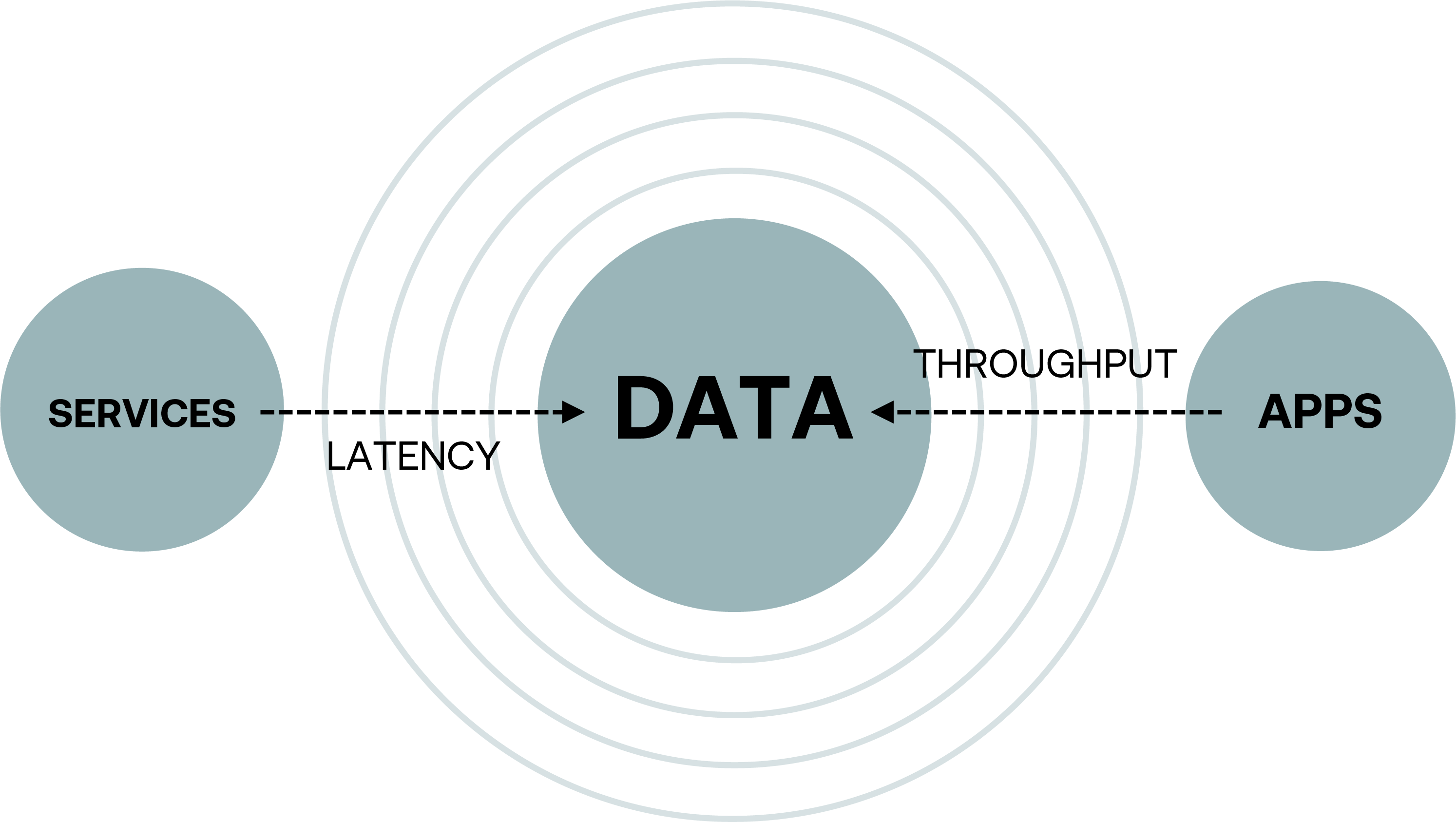Data Gravity Index™ 2.0: As Trade Flows, Data Flows
What is Data Gravity?
Data Gravity refers to the idea that data has mass, and as its size and importance grow, it becomes increasingly difficult to move or replicate.
Data Gravity is the attractive force caused by enterprise data creation and exchange, drawing applications, servers, and other data. As data creation and exchange grows, it accelerates exponentially due to this attractive force. In centers of data creation and exchange, this explosion of data can be onerous for legacy servers and applications.

Patented Data Gravity Formula, McCory and Bishop, Digital Realty
Data Gravity can cause challenges that can impede the efficiency of data exchange, security, customer experiences, and innovation on a global scale. The Data Gravity Index™ 2.0 measures the impact of global data with GDP.
What is an example of Data Gravity?
A large enterprise storing data with a cloud provider for a long time may face challenges associated with Data Gravity. As data rapidly accumulates and reliance on the provider's tools grows, it becomes difficult and expensive to move to another provider or on-premises, even when those changes are necessary to bring data closer to users or unlock insights from siloed data. The data's integral nature to the organization's operations results in a significant gravitational pull, making relocation complex without affecting essential applications and services. Read the Data Gravity Index™ 2.0 to understand the effects of enterprise data across public cloud and private data centers.
What is the effect of Data Gravity?
The effect of Data Gravity is that it becomes increasingly challenging to move or relocate large volumes of data due to its weight and integral role in an organization's operations. This can make it difficult and costly to change cloud providers or move data back on-premises. Read the Data Gravity Index™ 2.0 to understand the effects of enterprise data across public cloud and private data centers.
Who invented Data Gravity?
The term "Data Gravity" was coined by Dave McCrory, Global Head of Insights and Analytics at Digital Realty, in 2010. The concept refers to the notion that data attracts applications and services, similar to how planets attract objects with their gravitational force. Read the Data Gravity Index™ 2.0 to find out our predictions on the intensity of Data Gravity.
How does Data Gravity affect the Enterprise?
Data Gravity, driven by the adoption of emerging technologies, like Artificial Intelligence (AI), increasing data localization, regulation, and sovereignty needs, creates a significant challenge for the enterprise. By putting data first from both a business and technology standpoint, this segment can profit from the shift to data-driven workflows and address Data Gravity where it is the highest—in major population centers. The Data Gravity Index™ 2.0 provides insight to enterprises on the growth of global data and the impact on GDP.

 Global (EN)
Global (EN)


